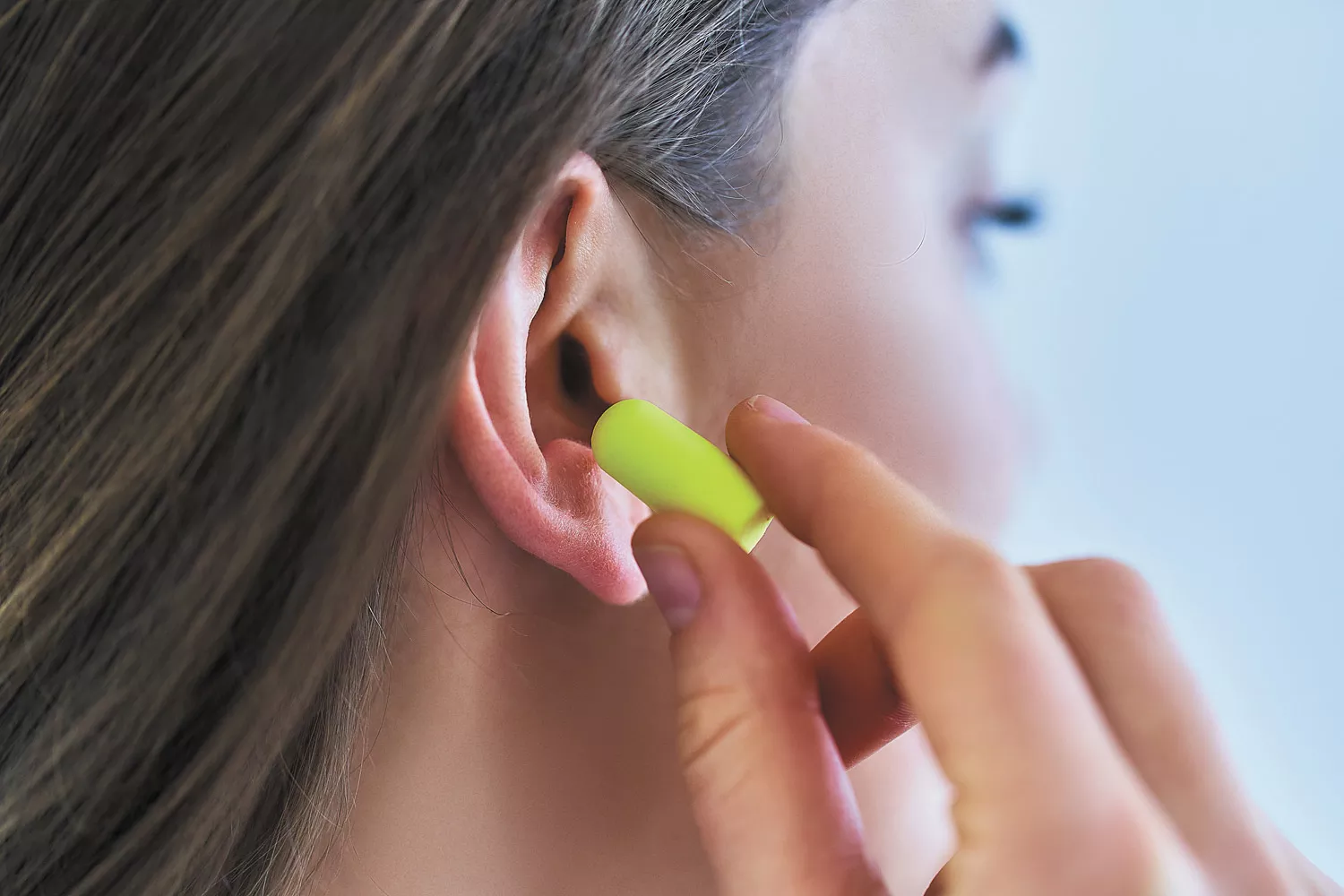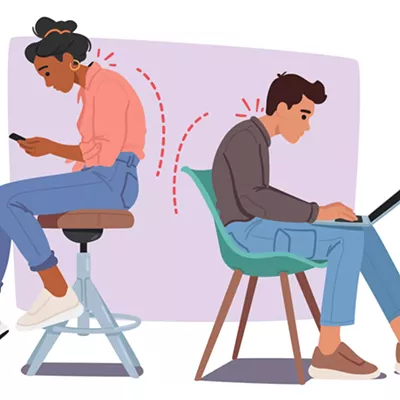Have you ever woken up to the sound of your neighbor mowing the lawn? What about a train horn? Or maybe the roar of power tools from that construction site across the street?
Well, those noises may be doing more than just making you a bit disgruntled.
Erica Walker, a researcher at Brown University, has been digging into this subject for almost a decade now. Her own experience with sound inspired a lifetime of dedication to the topic.
"It started when I was working as an artist," Walker says. "My apartment was my studio, so I was living and working in the same environment."
Then a family with two young children moved into the upstairs apartment.
"It was horrible," she says. "The kids ran around almost 24/7. I started collecting information on when the noise was happening, how loud it was and things like that so I could report it to my landlord. A close friend of mine encouraged me to get into the world of public health because they figured I might as well put all of this data collecting to good use and make some positive change out of my experience."
Now Walker runs the Community Noise Lab out of Brown University's School of Public Health, where she and a team of students explore the relationship between noise and health by working directly with communities to support their specific issues.
Her research has shown not only that noise is downright annoying, but that it can also affect your body in ways you might not realize.
NOISE AND YOUR BODY
That question may seem straightforward, but it can differ from person to person and from community to community. What qualifies as too much sound?
Walker defines noise as "unwanted sound." Any unwanted sound qualifies, not just loud things.
Dogs barking incessantly in the background, trains rushing by in the early morning, your neighbor's workout playlist blasting from a Bluetooth speaker, the construction of new homes in your general vicinity.
An invasion of sound can have a physical effect on you. "Think of it like your body entering fight-or-flight mode. Your heart rate increases, you sweat, your stomach turns and your body starts releasing stress hormones," Walker says.
Her team has noted health issues related to a sound-induced persistent state of fight or flight, such as cardiovascular problems and even the increased use of antidepressants. But she adds, excessive sound exposure "can knock out your hearing. That's the side effect that most people think of."
Jorgen Bang deals with hearing loss related to noise exposure daily as a hearing instrument specialist at Professional Hearing Healthcare in Spokane. He often works with people whose hearing was impacted by loud sounds such as gunfire or prolonged noise exposure in occupations like forestry or construction work.
"It doesn't have to be continuous noise," Bang says. "It can be one incident. If somebody worked on a flight line, it could be one incident from a jet, but primarily it is years of exposure."
If that period of prolonged exposure happens early in life, the side effects may be life-altering.
"If children experience prolonged noise exposure during speech development, they're more likely to have speech delays," says Walker. "[Speech delays] can lead to learning disruptions and disorders. It can completely derail their lives for many years to come."
Noise exposure can also cause tinnitus (persistent ringing in the ears), and there have been reports that for those in the later stages of life, hearing loss is linked to cognitive decline and dementia.
Ray McNiven, a Spokane audiologist whose private practice is called Volume Hearing & Audiology, emphatically says that hearing loss does not cause dementia. That doesn't mean it isn't a problem.
"We are actually seeing a lot of connections between hearing loss and cognitive decline. What it comes down to is engagement. Hearing loss is a communication barrier. If it is not addressed, over time people start to withdraw."
In addition, the brain is always efficient — if there's less stimulation coming in from the ears, the associated processing resources will be allocated elsewhere, creating a downward spiral.
PEACE AND QUIET
It's not easy to outrun noise. There's no clear escape route when your neighborhood is plagued with constant noise from cars or construction. But Walker says much of that unwanted noise could be managed better.
"Mitigating sound should be a priority when building communities, not an afterthought," says Walker. "The noise issue I had [at my apartment] could've been avoided if there were better building codes. Noise from construction or heavy traffic can be easily avoided by buildings installing soundproof windows."
Since most of us won't be able to significantly adjust the soundscape of our environments, the next best thing is protecting your own ears.
Here's a general rule of thumb: According to the National Center for Environmental Health, city traffic as well as gas-powered lawn mowers create around 80-85 decibels of sound. Hearing damage can occur after two hours of exposure to those levels of noise. About 50 decibels is considered a safer zone.
"It could be one incident... but primarily it is years of exposure."
For a quick fix, cheap foam earplugs may be able to block out nearly 30 decibels of sound. Loop, a popular luxury earplug brand, offers up to 33 decibels of sound reduction. Earmuffs are designed to fit most people, but those who wear glasses or have beards may have a tough time fitting them to their heads as glasses and facial hair can create gaps in the ear muffs.
McNiven says he offers custom hearing protectors created from an ear mold that run about $175 to $200 and will last at least five years. These are easier to use than foam plugs — people are less-inclined to have to take them in and out frequently — and may even be comfortable enough to use for sleep.
What if you'd still like to hear some sounds — like people talking to you — just not the annoying or damaging ones?
Amplified hearing protection could be the answer. Rather than offering maximum sound suppression, these devices filter selective sounds. They can be expensive — running about $1,500 for a set — and offer generalized or highly specific protection.
"Some are for motor sports, there are different types for hunting, whether they're a bird hunter or elk hunter," says McNiven.
A self-proclaimed "gigantic nerd," McNiven says, "I actually modified a set of hearing aids — they function more like hearing protection. They allow everything to come in but it's like turning the volume down to a comfortable level."
WHAT'S THAT YOU SAID?
The good and bad news for hearing loss is that it can be managed, but not fixed.
"Hearing aids are often lumped in with glasses," says McNiven. "You put on a pair of glasses and you literally correct your vision. Hearing aids don't correct hearing loss."
Think of sound as a continuum from low to high frequency, soft to loud. Hearing loss occurs in various ranges and is the result of nerve damage.
"I can't return hearing back to normal, but I can retrain your brain," says McNiven. Hearing aids work by moving sound from outside of the person's audible range back into the range that still exists.
"It doesn't sound 'normal,'" says McNiven. "You're remapping your world of sound. The outcomes are very good, hearing aids do work, but it's not an instant fix. It's more akin to therapy than it is to a correction."
McNiven can also use hearing aids to help manage tinnitus. Studies show as many as 90 percent of people with chronic tinnitus also have hearing loss and the ringing may be a side effect. Boosting sound in lost frequencies can often help. "We think the brain is looking for stimulation in the areas where there is hearing loss," he says.
Hearing aids have come a long way in just the past 5 years — they can look just like ear buds or Airpods for those concerned with appearance. They now have rechargeable batteries, a feature that is not only more convenient but that also allows hearing aids to have increased processing power and to incorporate Bluetooth.
"The technology is pretty amazing. These things know more about your acoustic environment than you do," says McNiven, as he chatted on the phone through his hearing aid's Bluetooth.
But he adds, "As much as I get a kick out of working with hearing aids, I'd rather protect hearing on the front end."
Additional reporting by Anne McGregor





















